May 2011
The warblers returned in force throughout May. We saw the return of most of the breeding species to our area through the first 2 weeks of May. We had a dip in numbers of birds banded during the 3rd week as eastern winds likely pushed a lot of birds to our west. In terms of numbers of birds banded, it was a rather average spring migration at Powdermill. Some of our highlights and photos of molt limits are below. Banding totals by month and year can be found on our banding summary page.
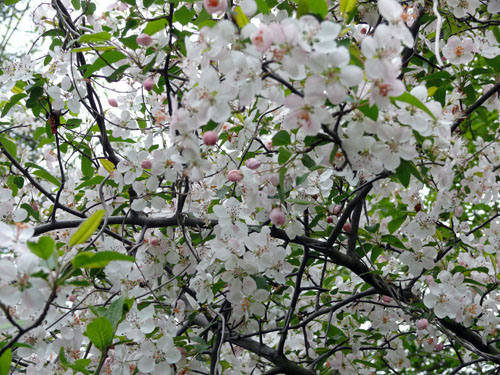
Hawthorn flowers.
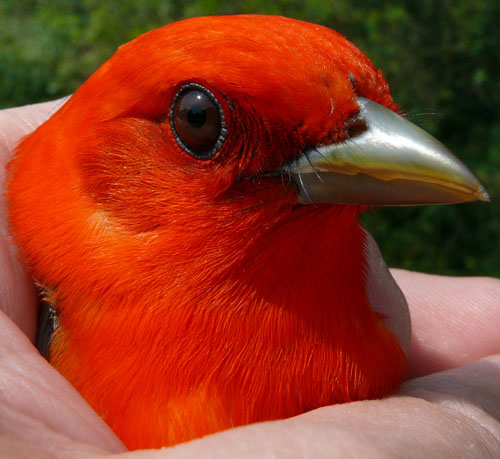
The striking plumage of a male Scarlet Tanager.
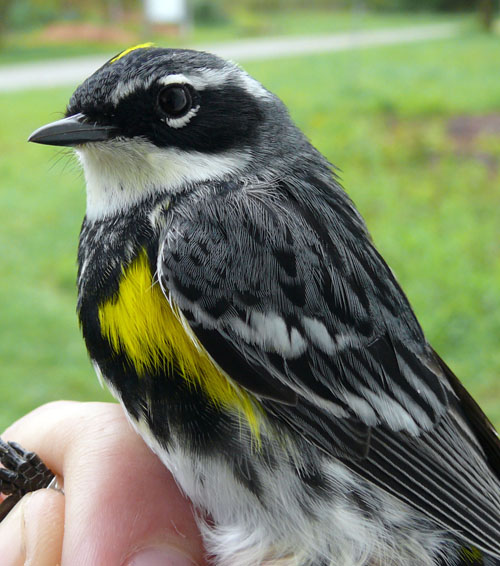
An ASY male Yellow-rumped Warbler.
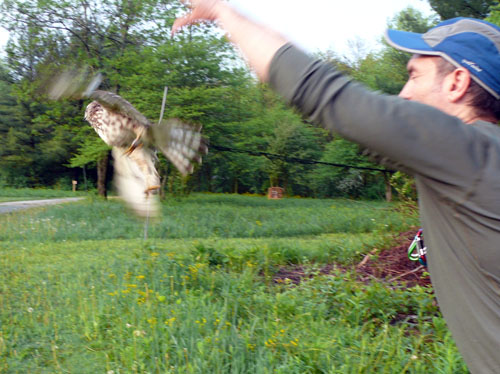
Andrew Vitz releasing a Broad-winged Hawk.
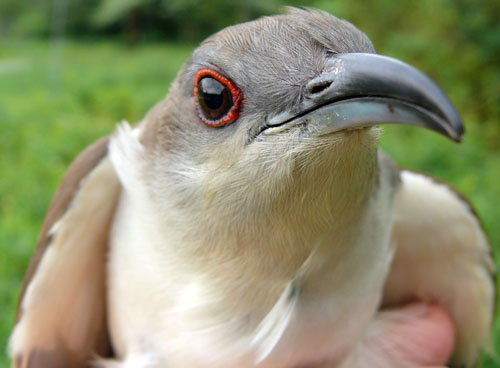
The first of 2 Black-billed Cuckoos banded this spring.
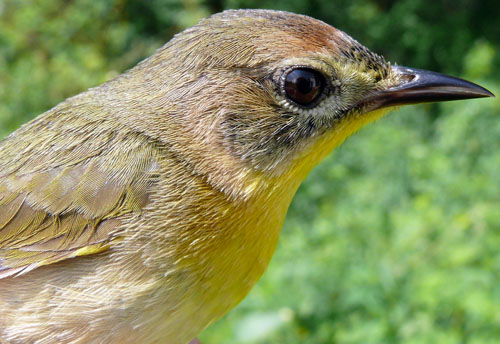
A very colorful ASY female Common Yellowthroat. This bird has the beginnings of a black mask, and it is not unusual for older females to demonstrate male-like plumages.
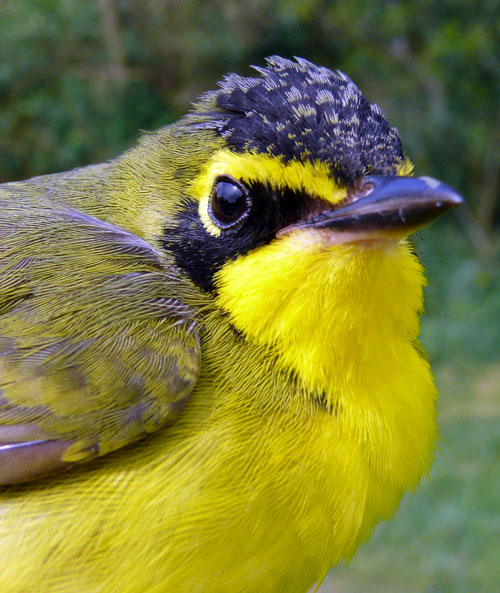
A male Kentucky Warbler.
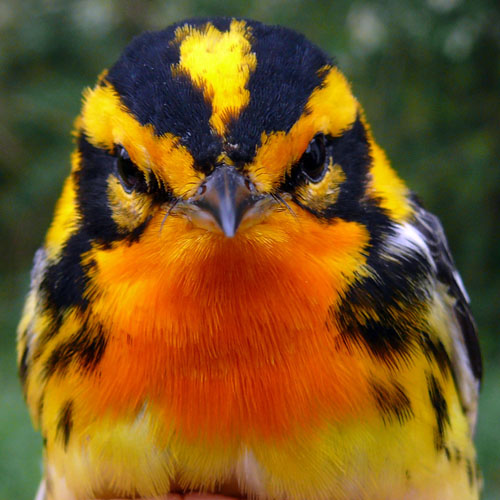
Male Blackburnian Warbler.
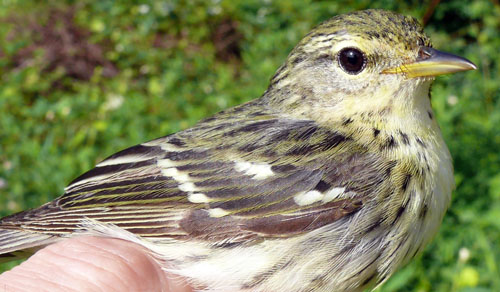
The only Blackpoll Warbler banded this spring was a SY female. A photo of this bird's wing is shown below.
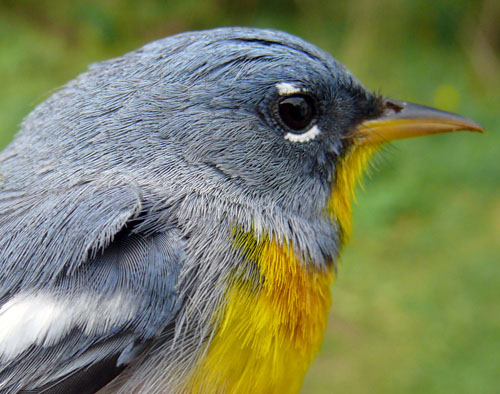
A male Northern Parula.
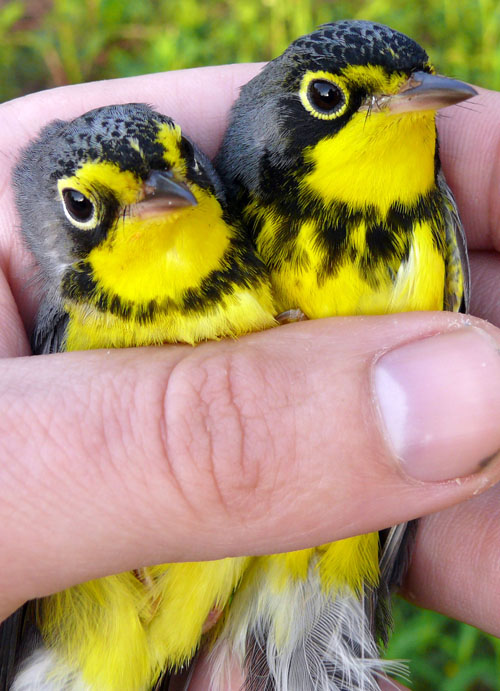
SY (left) and ASY (right) male Canada Warblers. Notice the reduced black in the necklace and crown of the SY bird.
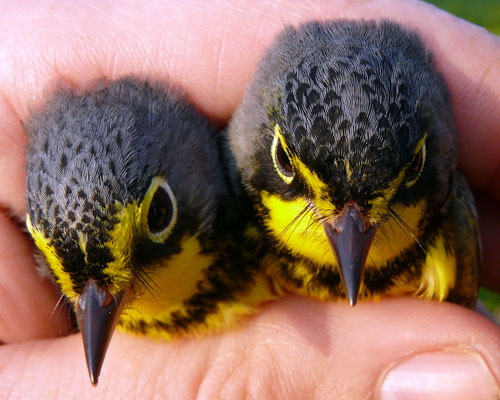
Another view of the same Canada Warblers (above).
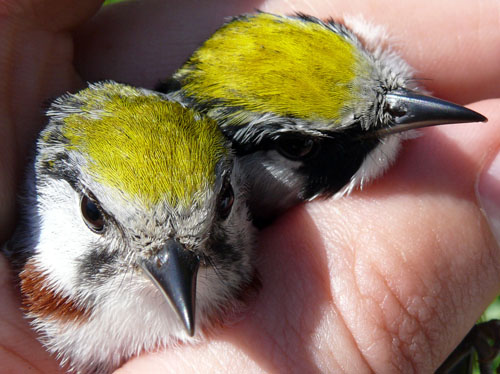
Female (left) and male (right) Chestnut-sided Warblers. Although they have similar plumages, the male has a brighter yellow crown and a more extensive and blacker face pattern
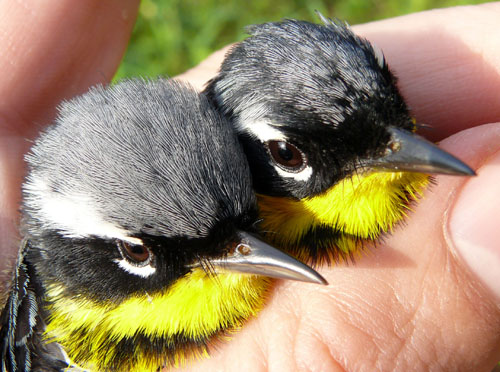
Two male Magnolia Warblers with the one on the right exhibiting black tipping to the crown feathers.
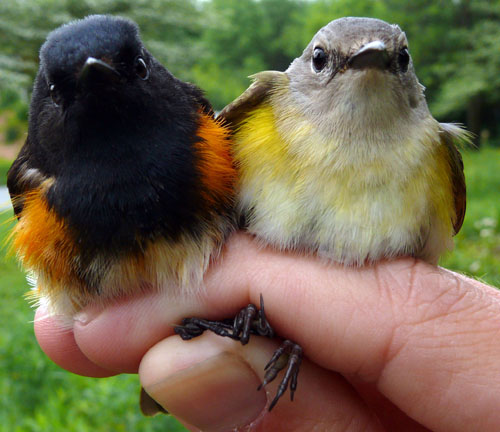
An ASY male and female American Redstarts.
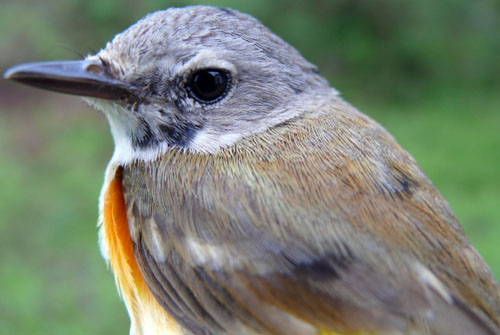
A SY male American Redstart with unusual orange coloration to its back feathers.
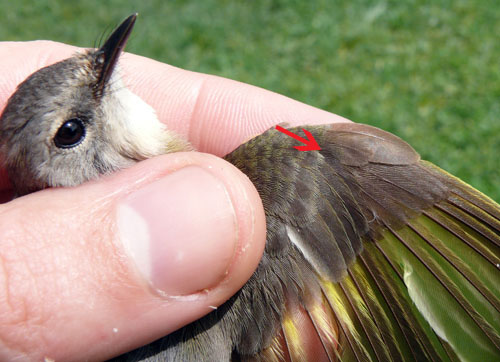
Here is another section on seeing molt limits and is a continuation of the mid spring highlights.
A SY female American Redstart. Notice the replaced A1 (alula covert, arrow) and CC (carpal covert) feathers next to the retained juvenile A2, A3, and primary coverts. This molt limit was created during the pre-basic molt that occurred the previous summer after this bird left the nest.
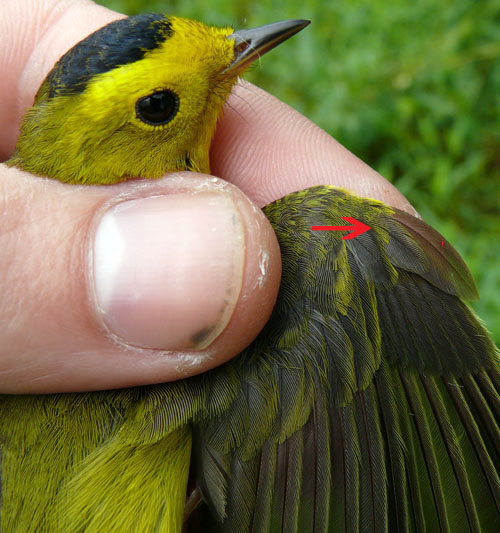
Molt limits can be difficult to detect in Wilson's Warblers and are even harder to convey through photographs. With that said, look for the subtle difference between the replaced A1 and CC contrasting with the retained A2, A3, and primary coverts. This bird shows the same pattern as the redstart above, which is typical for SY warblers in the spring. On both of these birds the small A1 feather is difficult to see as it is partially under the carpal covert.
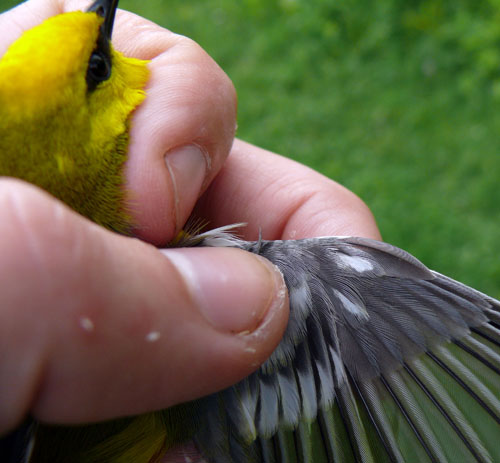
An ASY male Blue-winged Warbler. Like many ASY male Black-throated Green Warblers (see April update), this bird has a large white spot on the A2 feather.
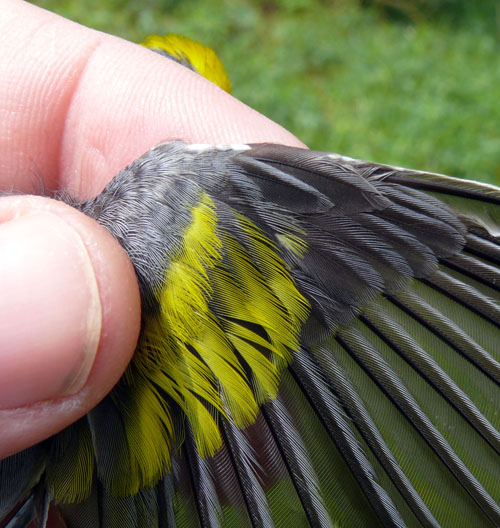
An ASY male Golden-winged Warbler.
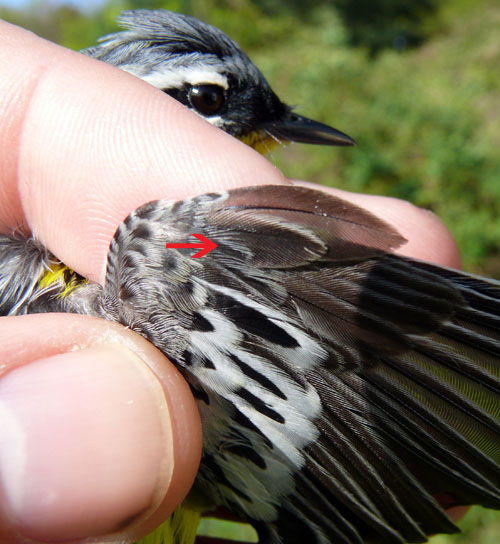
A SY male Magnolia Warbler with a very distinct A1, CC molt limit. Compare those feathers on this bird with the same feathers of the adult warbler photographed above.
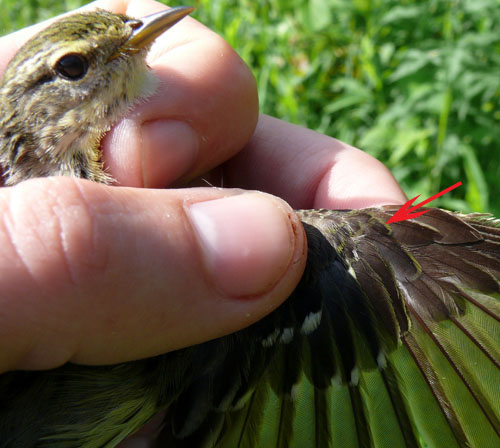
A SY female Blackpoll Warbler with an A1, CC molt limit. The arrow is pointing to the A1 or alula covert.
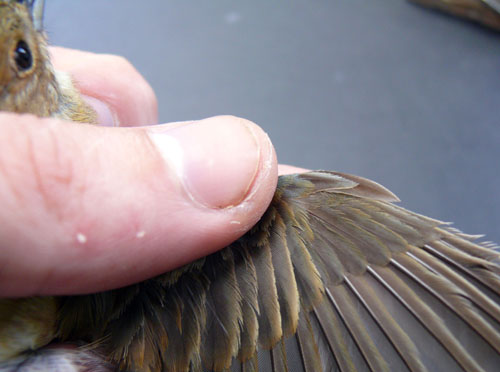
An ASY female Indigo Bunting. SY Indigo Buntings frequently replace all alula feathers, making the primary coverts the best group of feathers to examine when determining age. During the spring, SY males and females will have only brown edging on these feathers, while ASY males will have strong blue edging and ASY females have brown/blue edging (like the bird in the photo).
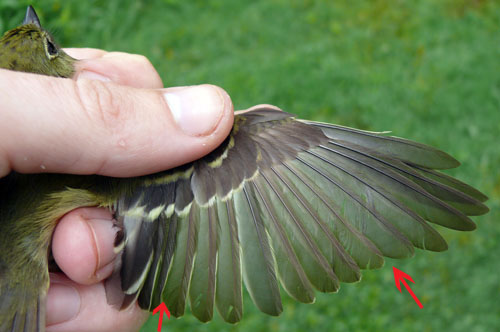
A SY Yellow-bellied Flycatcher. This species shows an eccentric molt pattern that is quite obvious on SY birds. All of the flight feathers (except the 1 darker feather) between the arrows are juvenile feathers.
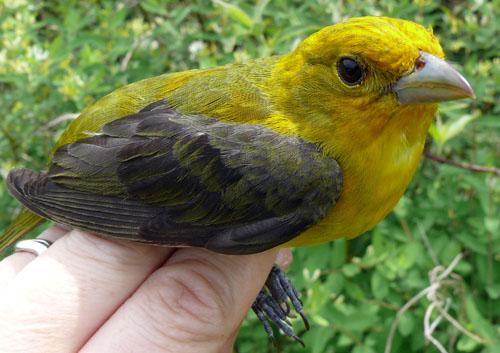
An ASY female Scarlet Tanager with an orange tinged plumage.

Blaine Carnes, a spring bander, processing a Magnolia Warbler at Powdermill.
